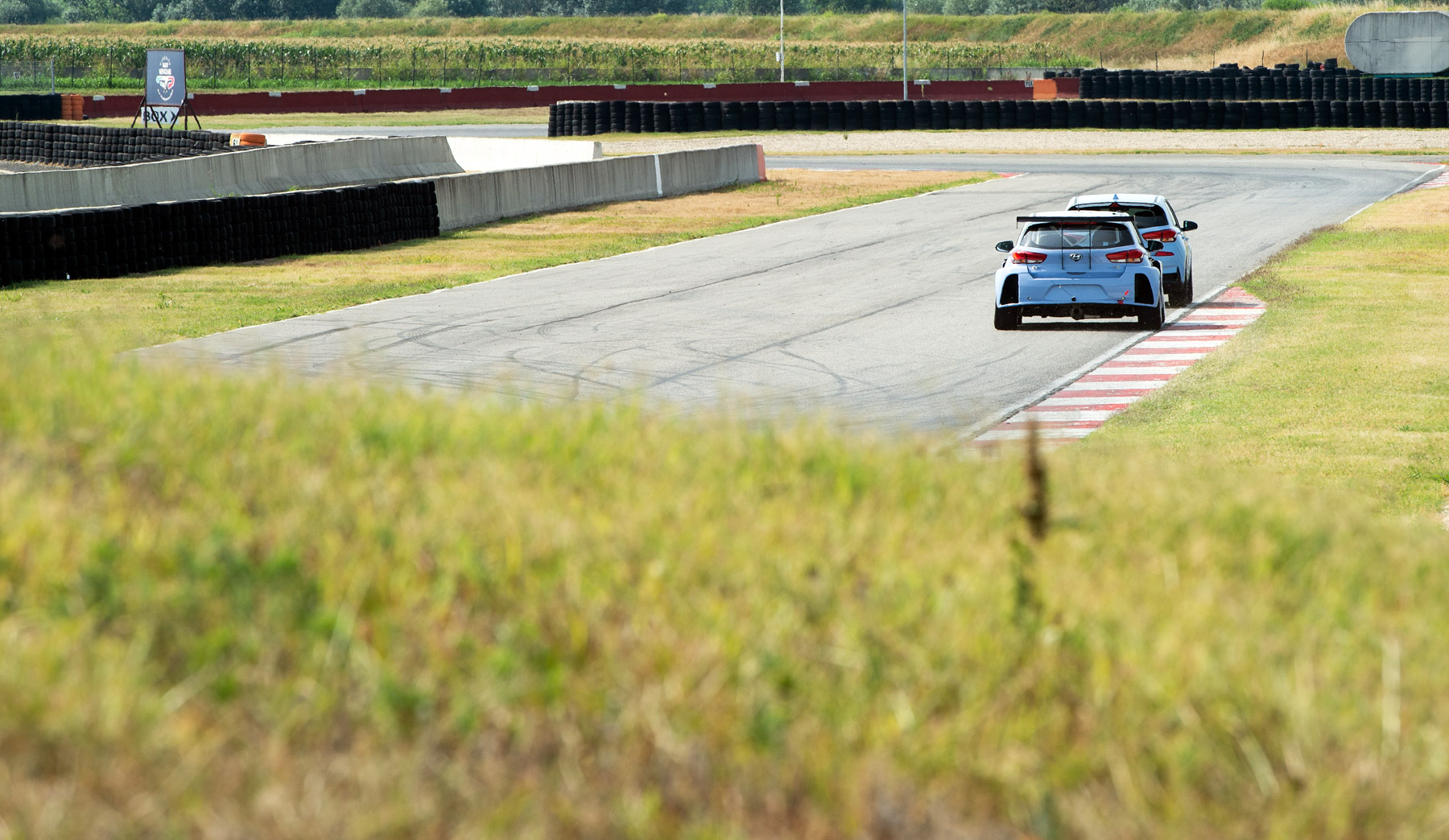i30 N – vs the race car: The i30 N has proven itself at a trackday and on the rally stage, but can it compete against a race car with a singular sense of purpose? Only one way find out.
ROAD CAR VERSUS RACE CAR. PUT THEM together on a track and it’s not hard to predict what’ll happen. While the i30 N you can buy from a dealer and drive to work every day has to be able to fulfil a range of tasks, the race car just has one job in life – to go around a circuit as quickly as possible.
But the relationship between the TCR-series i30 N and its road-going counterpart is a little more interesting, so we’ve got them side by side to compare – and to have a little race.
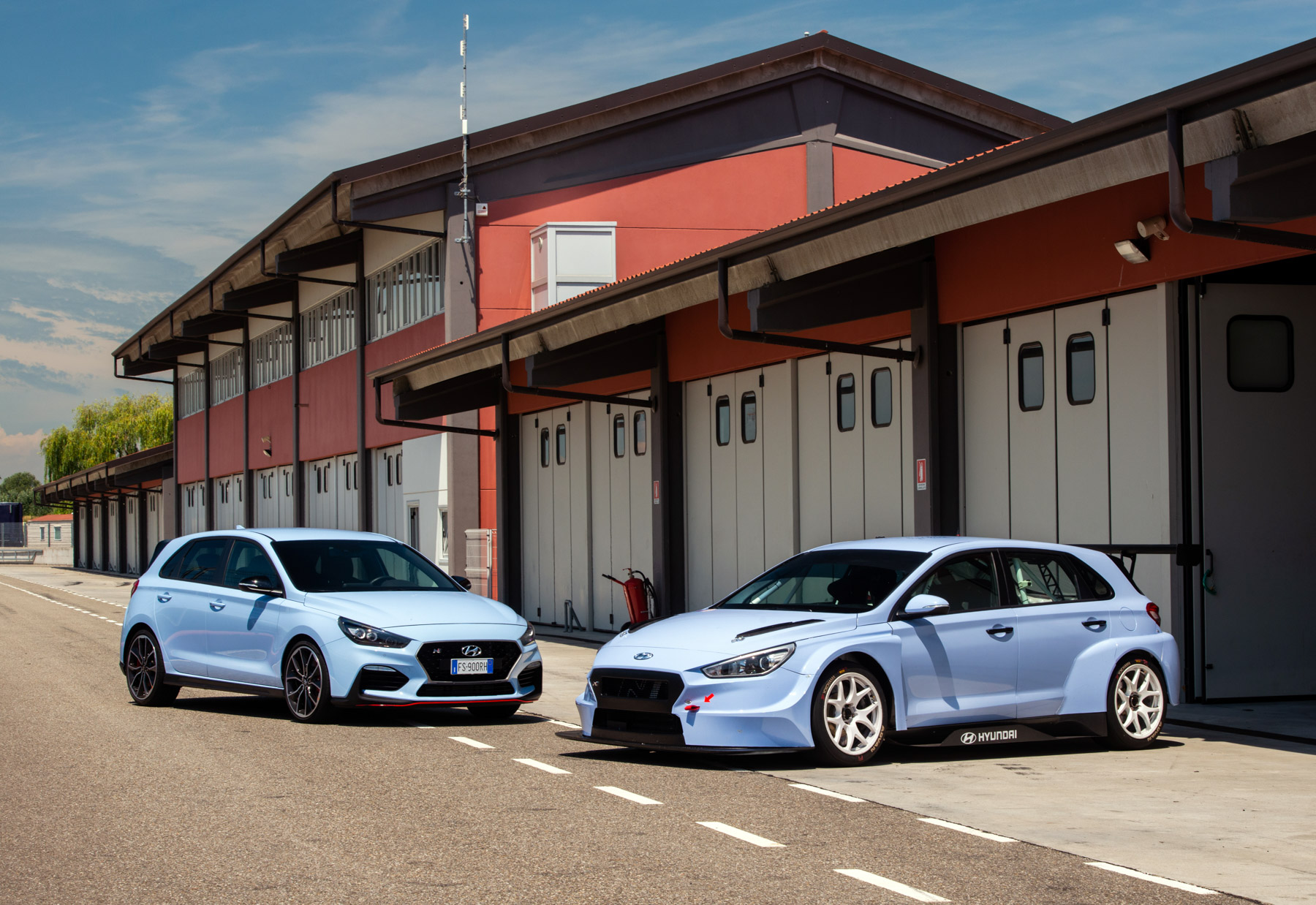
They share a lot more in common than you might think, and the racer is certainly not just a space frame rebranded with some Hyundai stickers. This is partly due to the philosophy of the TCR series, which aims to make it affordable for more teams and drivers to enter. If you’d like one, Hyundai’s motorsport division will sell you a car like this for around £125,000 (circa $220,000) – and it has built about 70 cars already.
Sharing parts with road cars keeps costs down, which keeps the grids full and the competition healthy. But it also ensures a good level of cross-fertilisation between the people who make road cars and those trying to make them go faster in competition.
Looking at them side by side, at the Tazio Nuvolari Circuit near Milan, Italy, there is an obvious resemblance, but clearly the race car looks more purposeful. The body has brutal box wheelarches that are essential to maintain the aerodynamics and wider track needed for racing. The roof-height rear wing is supported by twin struts and would be considered over the top even by former readers of Max Power.

But under it all, there are remarkable similarities. According to the TCR’s chief engineer, Matias Brutos Schmidt, the i30 N TCR and road car share a long list of parts. The bodyshell is plucked from the production line, where it could have been destined to be a 1.0-litre base model. The front and rear subframes, steering arms, bonnet, engine block, doors and windows are also the same as standard. The new parts, and those that are upgraded, are tested by the same engineers who build the road cars, too – the motorsport team makes full use of the engineering resources at Hyundai Motor Company’s Namyang R&D centre.
Part of the reason for all this effort and use of well-tested standard parts is to create a friendly-to-drive, reliable car. Private racers and teams who buy an i30 N TCR might not expect the local dealer to service it and honour the warranty, but they do want a car that doesn’t need a team of mechanics to keep it running, which is why each team is restricted to just ten team members per car at a race weekend.

Inside is where the road and race car crossover ends. The interior has been stripped of luxuries of course, mainly to save weight, and the TCR is 300kg lighter as a result. Climb awkwardly through the roll-cage that criss-crosses the extremities of the cabin and slide into the tight seat and you find the steering wheel is positioned right back and almost in your chest. A small all-digital display is mounted on the far end of the steering column to show the car’s vital statistics. Start the 260kW, 2.0-litre turbo engine and an unfiltered metallic thrash vibrates the bodyshell so much that the world blurs. It’s almost deafening, even with a helmet on.
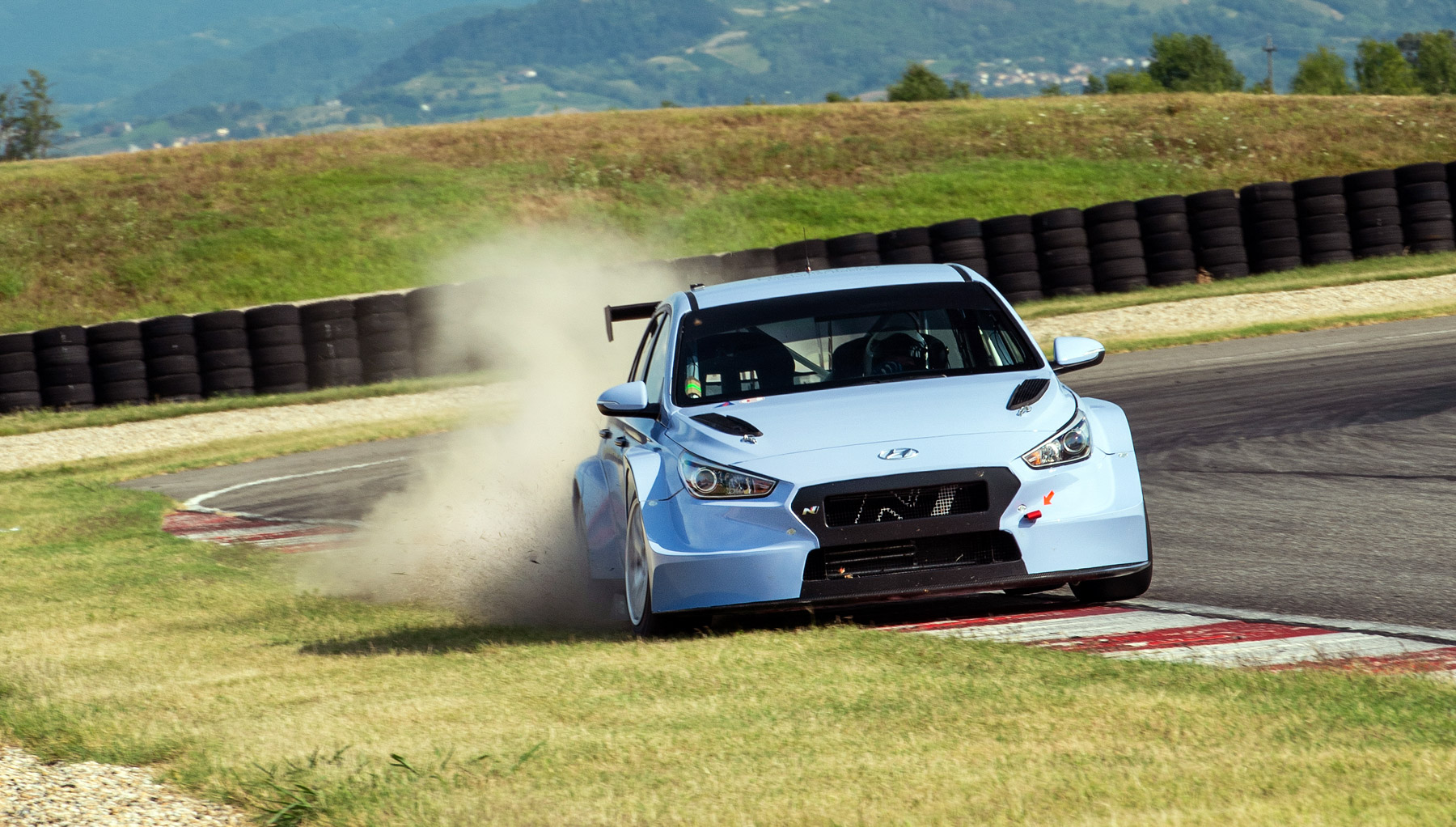
The i30 N TCR is predictably quick, especially with a man of Dickie Meaden’s experience behind the wheel. It can stop sooner than the road car too, with stomach-wrenching power and feel from the 380mm front discs with six-pot calipers.
Steve Sutcliffe is in the road car and has been given a lap’s head start. The challenge for Meaden is to catch him, completing six laps to Steve’s five. It’s still easy to assume it will be a walkover for the TCR car. But we’ve done our homework, and the TCR is lapping here in the region of 1min 20sec. The i30 N Performance road car, meanwhile, is around 15 seconds a lap slower around the 2.8km circuit. So, if our sums are correct, Meaden is going to have to go pretty hard to catch up.
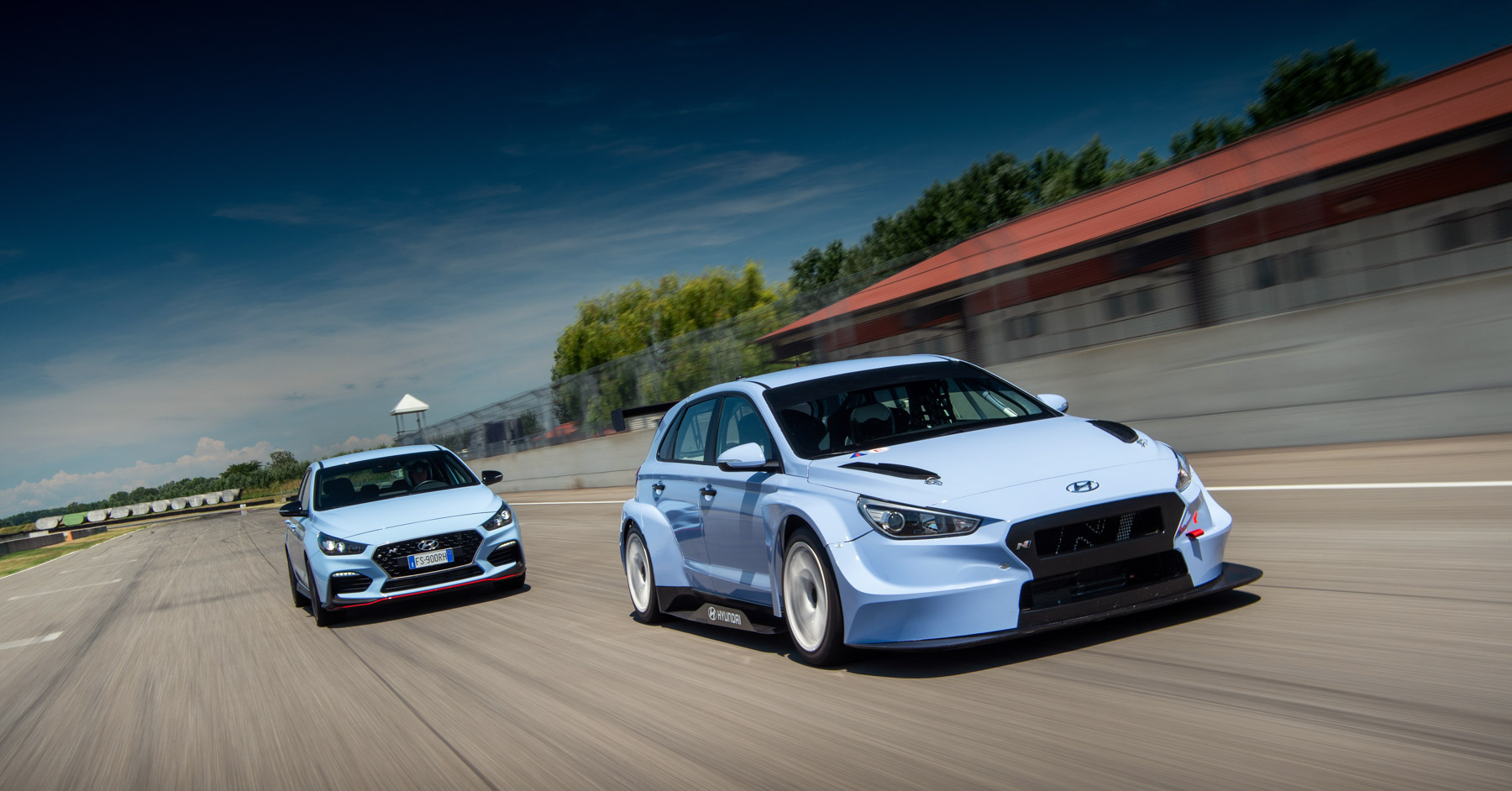
Steve knows and respects the i30 N road car, not least because he’s driven it to the track from the airport in air-conditioned comfort. He’s quietly confident of his chances, having also had previous experience of it on track and knowing the lengths Hyundai N went to in its development. On the tight Nuvolari circuit, the i30 N’s electronically controlled limited-slip differential and its bespoke Pirelli P Zero tyres will work in his favour, especially as Meaden tries to get some heat into his slicks on the first few laps.
Hyundai World Touring Car Cup driver Norbert Michelisz is on hand to advise Dickie: ‘Remember we have no tyre warmers. You will need to go carefully for maybe two laps until there is some heat in the rubber. Then you can push it more.’ Will this give Steve a crucial advantage over such a short race distance?
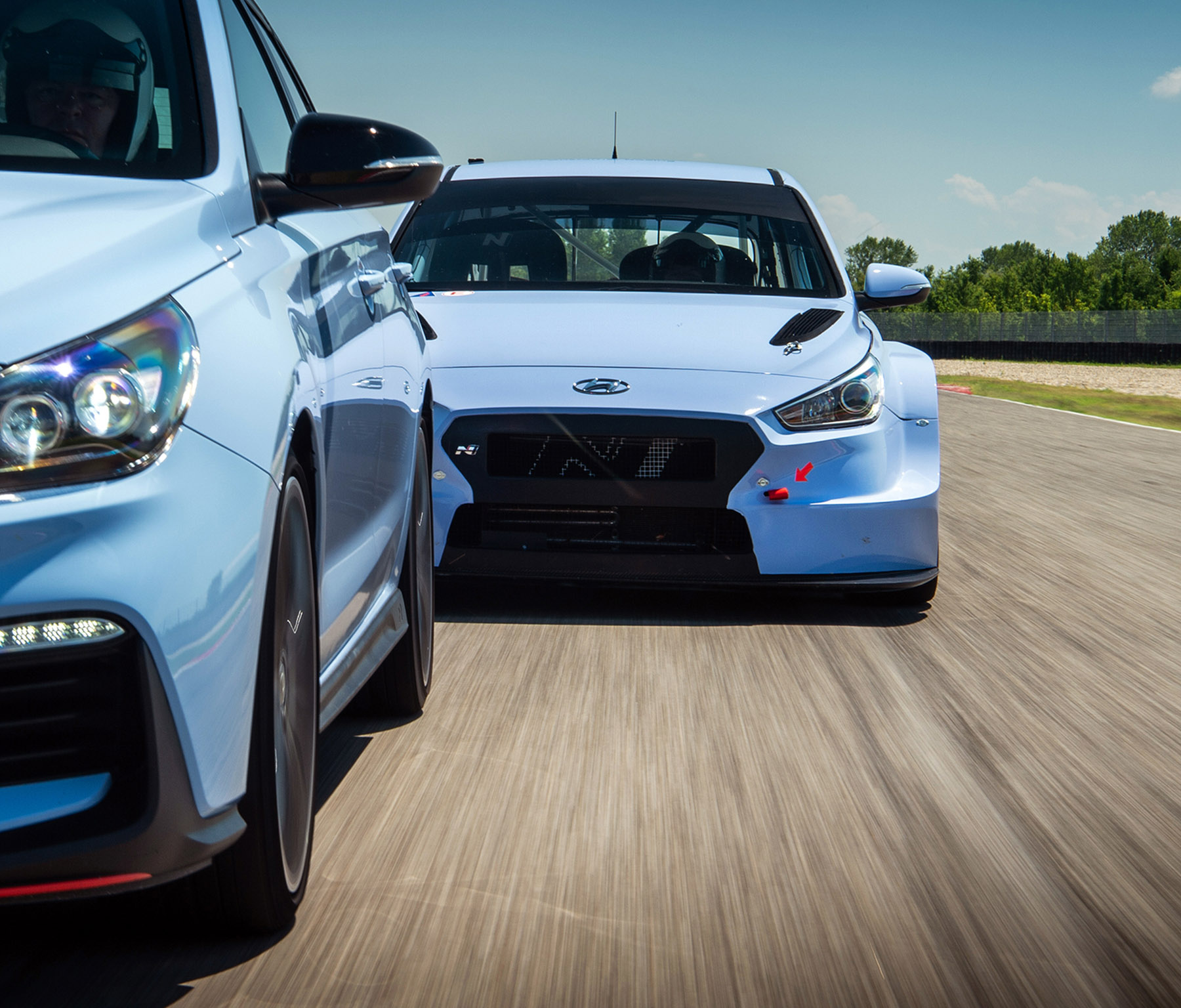
In the end, Steve starts to feel the pressure of the TCR car filling his mirror and Dickie’s car is getting faster with each lap. The road car is built with trackdays partly in mind, but there are limits, and in the heat of an Italian summer the road-focused Pirelli rubber is becoming, er, tired.
One mistake three corners from the finish line is enough to give Dickie a door to sneak through, the TCR finally passing Sutcliffe on the exit of the last corner as they run for the chequered flag.
As Meaden gloats in the pits and packs away his track toy, Steve turns up the climate control, dials in the Apple CarPlay and heads to the airport for a cold beer.
